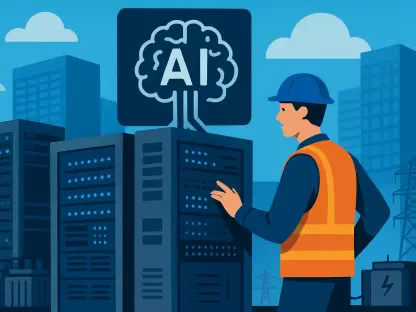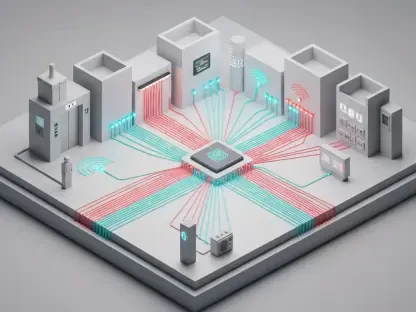The energy performance gap is a significant issue plaguing modern architecture and environmental sustainability, referring to the often stark difference between a building’s predicted energy consumption and its actual energy use. This discrepancy can reach up to 50%, severely impacting both economic and environmental outcomes. In response, Cardiff University in Wales has made significant strides in addressing this issue with cutting-edge technology. Under the leadership of Professor Yacine Rezgui, the research team has developed a solution that integrates Building Information Modeling (BIM), Artificial Intelligence (AI), and semantic digital twins, a trifecta poised to revolutionize energy efficiency in building management.
Innovative Approaches in Building Management
Semantic Digital Twins Technology
Semantic digital twins stand at the forefront of this transformative technology, offering an insightful blend of live sensor data and advanced machine learning algorithms. Unlike traditional building management systems, these digital twins are dynamic and self-learning, adapting to the ever-evolving variables within a building’s environment. Remarkably, they address the longstanding challenges of managing occupant behavior, unpredictable weather conditions, and the complex interactions among building systems.
The platform developed by Cardiff University, called the Computational Urban Sustainability Platform (CUSP), serves as a testament to the power of semantic digital twins. The platform is not only flexible but also interactive, enabling real-time optimization of energy use and significantly enhancing environmental performance. This approach has been patented and subsequently commercialized by the university’s spinout company, Optimise AI Ltd., marking a crucial step toward wider implementation.
Real-World Implementation and Results
The real-world application of CUSP is as impressive as its theoretical underpinnings. Recent validation trials demonstrated a remarkable 25% reduction in energy consumption while simultaneously improving indoor air quality, underscoring the practical benefits of this innovative technology. The platform’s adoption has been supported by over £10 million from prominent institutions, including UK Research and Innovation (UKRI) and the European Commission. These financial endorsements highlight the significant potential of CUSP to reshape energy management solutions globally.
Moreover, Optimise AI offers its suite of tools through a convenient ‘Software as a Service’ model. This flexibility allows even buildings with limited data capabilities to exploit real-time energy management insights. The platform’s user-friendly interface is an important asset, making cutting-edge technological solutions accessible to a broader audience. The semantic data model incorporated within CUSP, often described as the building’s ‘digital DNA,’ is fundamental to this advancement, effectively connecting sensors, devices, and occupants to intelligently control energy systems.
Expanding Horizons Beyond Academia
Collaborative Industry Partnerships
The evolution of this technology from academic research to practical application has been facilitated by robust collaborations with industry giants such as Siemens, IBM, and Schneider Electric. These partnerships have been vital in refining the platform according to industry standards and real-world demands. The role of local authorities in this collaborative network cannot be overlooked, as they have provided critical testing grounds for the platform, ensuring its efficacy and relevance.
One notable example of the technology’s application is its integration at major transport hubs such as Network Rail stations in Reading and Bristol. These trials showcase the scalability of the platform and its ability to deliver sustainable energy solutions on a large scale. Darwinian adaptations to varied settings confirm the platform’s transformative potential in steering industry standards toward more sustainable practices.
Sustaining Large-Scale Adaptation
Further, ScotRail’s implementation of digital twins throughout its network exemplifies the strategic embrace of this technology, paving the way for other industries and sectors to follow suit. This broad adaptation signifies a pivotal shift toward more sustainable building practices and the recognition of digital twins as critical tools in reducing carbon footprints. The platform’s adaptability and the drive for industry-wide integration reflect a growing commitment to sustainability-focused operations that marry innovation with environmental responsibility.
These overarching trends signify a paradigm shift in building energy management. The seamless integration of technology with environmental sustainability goals illustrates the profound impact that academia and industry partnerships can have on real-world applications. The journey from university labs to operational deployment highlights the transformative power of semantic digital twins in narrowing the energy performance gap across various scales and contexts.
A Promising Future for Global Energy Management
The energy performance gap presents a major challenge for modern architecture and efforts toward environmental sustainability. This gap represents the frequent and substantial difference between a building’s predicted energy use and its actual consumption. In many cases, this gap can reach up to 50%, leading to significant economic losses and negative environmental impacts. This discrepancy highlights the need for innovative solutions to enhance energy prediction accuracy and efficiency in building management. Cardiff University in Wales has tackled this issue using advanced technology. Under the guidance of Professor Yacine Rezgui, a research team has crafted a pioneering solution that blends Building Information Modeling (BIM), Artificial Intelligence (AI), and semantic digital twins. This combination is set to revolutionize energy efficiency, transforming how buildings are managed and optimizing their energy consumption. By integrating these technologies, the team aims to close the energy performance gap, ensuring that buildings are energy-efficient and environmentally friendly.









